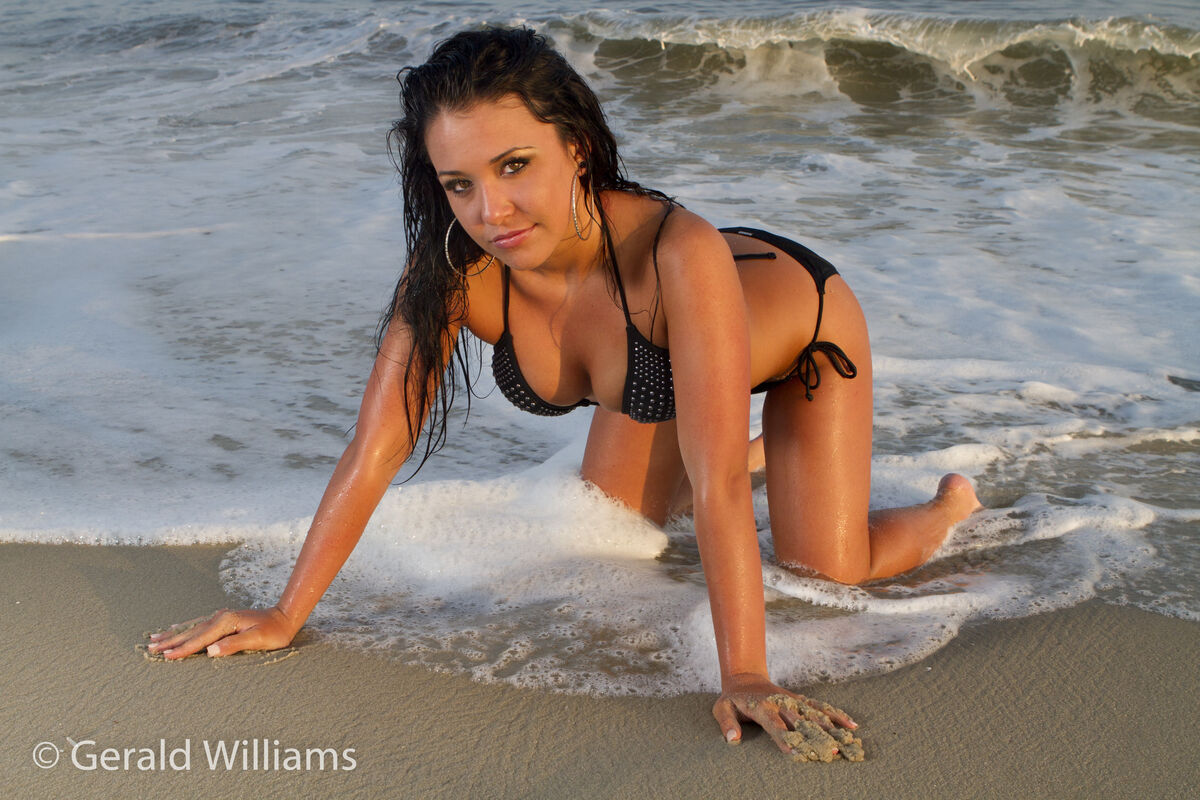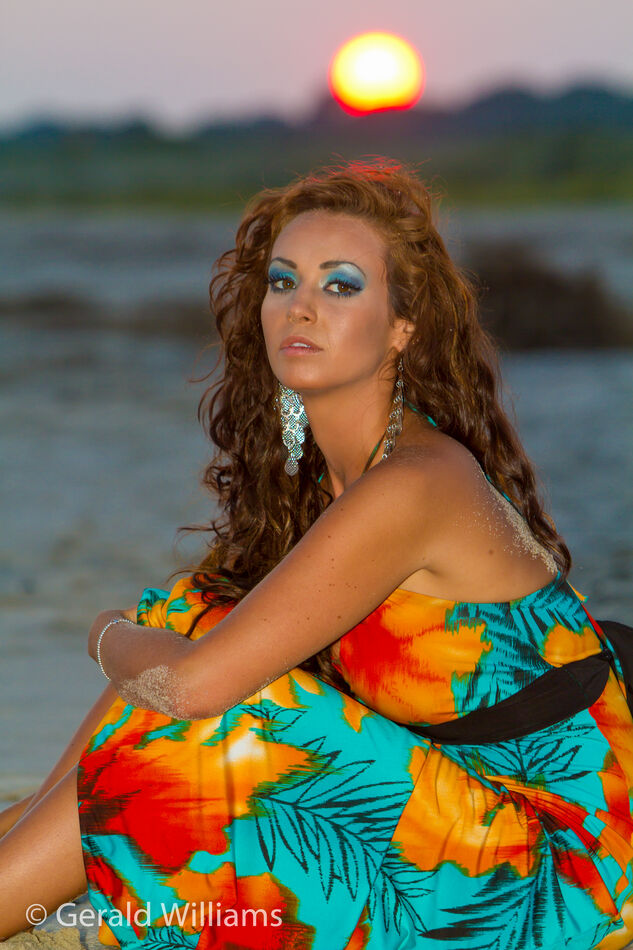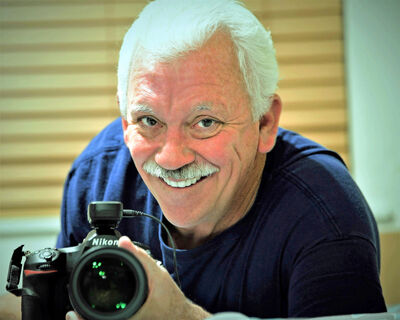Flash Filll
Dec 31, 2022 18:54:50 #
What is your favorite method to fill brightly lit scenes? On board flash? Alter the sync speed? Prefer off-camera flash?
Dec 31, 2022 20:15:23 #
Stevey wrote:
What is your favorite method to fill brightly lit scenes? On board flash? Alter the sync speed? Prefer off-camera flash?
Flash mounted on camera
Dec 31, 2022 20:43:44 #
Dec 31, 2022 20:58:18 #
Both on-camera and off-camera.
1) Here on-camera fill flash, a fall wedding shot in New Hope. Pa. USA
2) Off-camera fill flash from two flashes, a wedding couple jump up at golf course where they had their ceremony and reception
1) Here on-camera fill flash, a fall wedding shot in New Hope. Pa. USA
2) Off-camera fill flash from two flashes, a wedding couple jump up at golf course where they had their ceremony and reception
Dec 31, 2022 22:06:48 #
For bright sunlit shootg conditions, I use the very BASIC Synchro-Sunlhght method I learned over 50 years ago and it still works.
You have to KNOW your flash exposure by distance almost instinctively in order for it to work- and it helps to be able to easily estimate those distances.
So, first I set the aperture, correctly, for the distance I am shooting at, then set the shutter at the natural ligh setting for THAT aperture. If you master this technique is quick and always comes out with a nice clean lightg ratio under a wide variety of sunlight situations. You can apply the od f/16 rule for starters. That is f/16 on a bright sunny day at 1/the ISO setting. Therefore if your flas exposure is f/11 at ISO 200 you could shoot f/22 at 1/200 sec. Since most modern digital cameras will synch up to 1/250sec, you can work around the system.
If you want to stay away from a small aperture to avoid diffraction, you can simply decrease the falsh power or the ISO setting. All you need is a portable strobe or Speedlight mounted on the camera.
Remember this is a simple method that is very applicable to hand-held fast shootg situations like press and event coverages.
If you are going to use your off-camera camera light as a MIAN light you can still use the method as a basis. Find the flash exposure and add or subtract the ambient ligh via the shutter speed. You can create a studio-like setup with multiple flashes and darken or light the surrounding areas by variation in shutter speed. This method works very well when you can not find the right quality or direction of light to place your subject in or you find a good background but the subject lighing is poor. You can create a modeling and lighting direction with your fals and still use the out-of-doors ambiance.
As soon as you have full control over exposure management, you can use direct or modified flash lighting deepened on the effect you want to produce.
For low-light situations such as window lighting, I have modified a Speedlight to operate a 7 to 12 watt-seconds. It's mounted on my lens shade. If the window ligh is as f/3.5 or 5.6 for example, the lig is puttg out f/ 1.4 or f/2.8- just a WINK of light.
You have to KNOW your flash exposure by distance almost instinctively in order for it to work- and it helps to be able to easily estimate those distances.
So, first I set the aperture, correctly, for the distance I am shooting at, then set the shutter at the natural ligh setting for THAT aperture. If you master this technique is quick and always comes out with a nice clean lightg ratio under a wide variety of sunlight situations. You can apply the od f/16 rule for starters. That is f/16 on a bright sunny day at 1/the ISO setting. Therefore if your flas exposure is f/11 at ISO 200 you could shoot f/22 at 1/200 sec. Since most modern digital cameras will synch up to 1/250sec, you can work around the system.
If you want to stay away from a small aperture to avoid diffraction, you can simply decrease the falsh power or the ISO setting. All you need is a portable strobe or Speedlight mounted on the camera.
Remember this is a simple method that is very applicable to hand-held fast shootg situations like press and event coverages.
If you are going to use your off-camera camera light as a MIAN light you can still use the method as a basis. Find the flash exposure and add or subtract the ambient ligh via the shutter speed. You can create a studio-like setup with multiple flashes and darken or light the surrounding areas by variation in shutter speed. This method works very well when you can not find the right quality or direction of light to place your subject in or you find a good background but the subject lighing is poor. You can create a modeling and lighting direction with your fals and still use the out-of-doors ambiance.
As soon as you have full control over exposure management, you can use direct or modified flash lighting deepened on the effect you want to produce.
For low-light situations such as window lighting, I have modified a Speedlight to operate a 7 to 12 watt-seconds. It's mounted on my lens shade. If the window ligh is as f/3.5 or 5.6 for example, the lig is puttg out f/ 1.4 or f/2.8- just a WINK of light.
Dec 31, 2022 22:14:16 #
E.L.. Shapiro wrote:
For bright sunlit shootg conditions, I use the ver... (show quote)
My camera easily calculates all this automatically for perfect fill nearly 100% of the time.
Dec 31, 2022 22:33:11 #
Dec 31, 2022 22:35:50 #
Jan 1, 2023 00:41:16 #
E.L.. Shapiro wrote:
For bright sunlit shootg conditions, I use the ver... (show quote)
Appreciate your efforts and old-school methods. This pro having done this all for over 48 years in the business, I just now base my exposure on the ambient light to keep all the background properly exposed, and in TTL mode I can easily adjust each of my multiple strobe lights from the wireless trigger on my camera to get the lighting ratio I want . So much simpler than other methods of the past. And with my digital EVF I can easily check my results and further adjust quickly as needed.
Here shots made a couple of weeks ago for my nephew and his family for their Xmas card. It was a fully cloudy day in a tree covered public park that we wanted to shoot along a stream. I knew what f-stop I wanted to keep the amount of depth pf field I needed to keep everyone in focus. And I knew I wanted to keep my Sony A1 at ISO 500, which is its second native ISO (for the cleanest files). I used three Godox AD200Pro strobes on stands with reflectors and diffusers. I positioned them to give me some depth, separation, and dramatic lighting in some of the photos.
So as the afternoon went on and the ambient light decreased I just adjusted my shutter speed lower from a start of 1/400 sec. (my A1 can flash synch at 1/400 sec. in electronic shutter for fullframe, 1/500 sec. flash sync in APS-C mode) down to about 1/60 of second , keeping that ambient exposure right on for all my backgrounds . I did not use HSS here as I wanted fuller output from my strobes and using HSS cuts down the power output of your strobes.
As a long time photojournalist, modern TTL and HSS capable strobes make all those calculations fast and easy, great for outdoor shoots and events.
Click on download to see the better image quality.
Cheers and best to you.
Jan 1, 2023 07:23:40 #
If distance isnt a problem I use a bounce panel. Usually distance is not a problem with a good sized shoe mount unit, such as my old Vivitar 285. Acoarst sometimes of necessity one must ditch the panel and use direct flash.
~~~~~~~~~~~~~~~~~~~~~~~
Old nonTTL thyristor units like that also make it verrrrrry simple to figger the degree of fill. One simply decides how much to "disagree" with the dialed-in f/stops offered by the flash. Putting a bit of "snap" into a dull cloudy gray day is a different thing than shooting against the bright back lighting of sunshine.
~~~~~~~~~~~~~~~~~~~~~~~
Old nonTTL thyristor units like that also make it verrrrrry simple to figger the degree of fill. One simply decides how much to "disagree" with the dialed-in f/stops offered by the flash. Putting a bit of "snap" into a dull cloudy gray day is a different thing than shooting against the bright back lighting of sunshine.
Jan 1, 2023 08:06:29 #
billnikon
Loc: Pennsylvania/Ohio/Florida/Maui/Oregon/Vermont
Stevey wrote:
What is your favorite method to fill brightly lit scenes? On board flash? Alter the sync speed? Prefer off-camera flash?
I like dragging the shutter and pointing my on camara flash up and behind me at a 45 degree angle, manual exposure at about 1/3-1/2 - ev. on the flash and using ambient light to my advantage at about 1 stop underexposed usually does the trick for indoor set ups.
Jan 1, 2023 09:48:44 #
User ID wrote:
If distance isnt a problem I use a bounce panel. U... (show quote)
I use similar techniques of fill, whether it is a bright back lit situation or a dull cloudy day. The key is how much you want the fill to match or overpower the ambient light . I take advantage of all the features of modern strobes, both on-camera and off-camera.
I like to have some diffusion over my strobes, whether it is using a bounce card, bouncing off a surface, using a frosted dome, diffuser, or some other even larger light modifier.
1) Here Gina in the surf of the Atlantic Ocean in Cape May, New Jersey with strong sunlight coming in from right and behind. Diffused fill light used here.
2) Lisa with backlight later in the same day, in same location, with strobe with diffuser for fill.
3) Even later in daylong shoot, Monica with sunset backlight and some diffused fill, same location.
Click on download to see better image quality.
Cheers and best to you.
Jan 1, 2023 11:59:44 #
gwilliams6 wrote:
Appreciate your efforts and old-school methods. Th... (show quote)
Hey! Sorry about my "old-school" problem I AM OLD and can not reverse that situation. If you take the time to read into my post you will notice that I qualified my suggestion. It is an extremely simple method using one on-camera light and is, as the OP questioned, for bright sunlight. It can be applied to any ambient lighting situation once the photographer grasps the exposure management for flash and ambient ligh and knows how to achieve their ratio of choice.
I fully understand the concept of TTL, auto-flash, HHS, and cameras that synch beyond 1/250 sec. and all the automated features and modes on modern equipment. I have most of it. There are situations and conditions, however, where I do not wantot to leave the final decision to my equipment and want to have full control of ratio, contrast, and background management.
My absolute favorite method of environmental (outdoor) portraiture and fashion shoots is to negate flash altogether and use reflectors and subtractive lighting but that is not what the OP asked about.
I do not treat the form as an EGO contest or use it as a resume of my expereince- it's getting on 60 years and I am still working!
Thereis too much ageism and folks making fun of older techniques. Believe me, I don't use wet plates and flash powder but whether it's 1958 or 2023, natural light is natural light, flash is flash and there are many ways of combing them.
Of course, there is great automation in electric flash applications. Not everyone wants an automatic transmission, some folks prefer a stick shift- especially in a formula-1- race!
Well, it is 2023 as of today, so wealth, health, and happiness to all the gang here- HAPPY NEW YEAR!

Jan 1, 2023 12:43:42 #
Sometimes I use an on-camera flash in field, off camera with cord or radio controlled if time allows. In studio it can be multiple fixed lights and maybe a handheld flash to highlight. I am fond of the Gary Fong lightsphere as well. It works for me.

Jan 1, 2023 15:17:40 #
gwilliams6 wrote:
Both on-camera and off-camera.
1) Here on-camera fill flash, a fall wedding shot in New Hope. Pa. USA
2) Off-camera fill flash from two flashes, a wedding couple jump up at golf course where they had their ceremony and reception
1) Here on-camera fill flash, a fall wedding shot in New Hope. Pa. USA
2) Off-camera fill flash from two flashes, a wedding couple jump up at golf course where they had their ceremony and reception
Beautiful exposures. Nice work, I admire your technique.
If you want to reply, then register here. Registration is free and your account is created instantly, so you can post right away.













